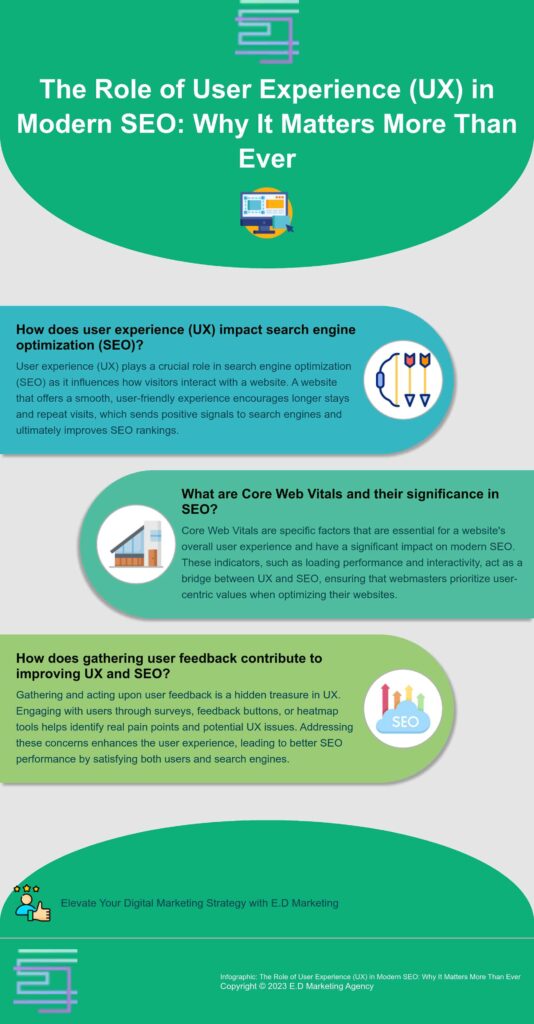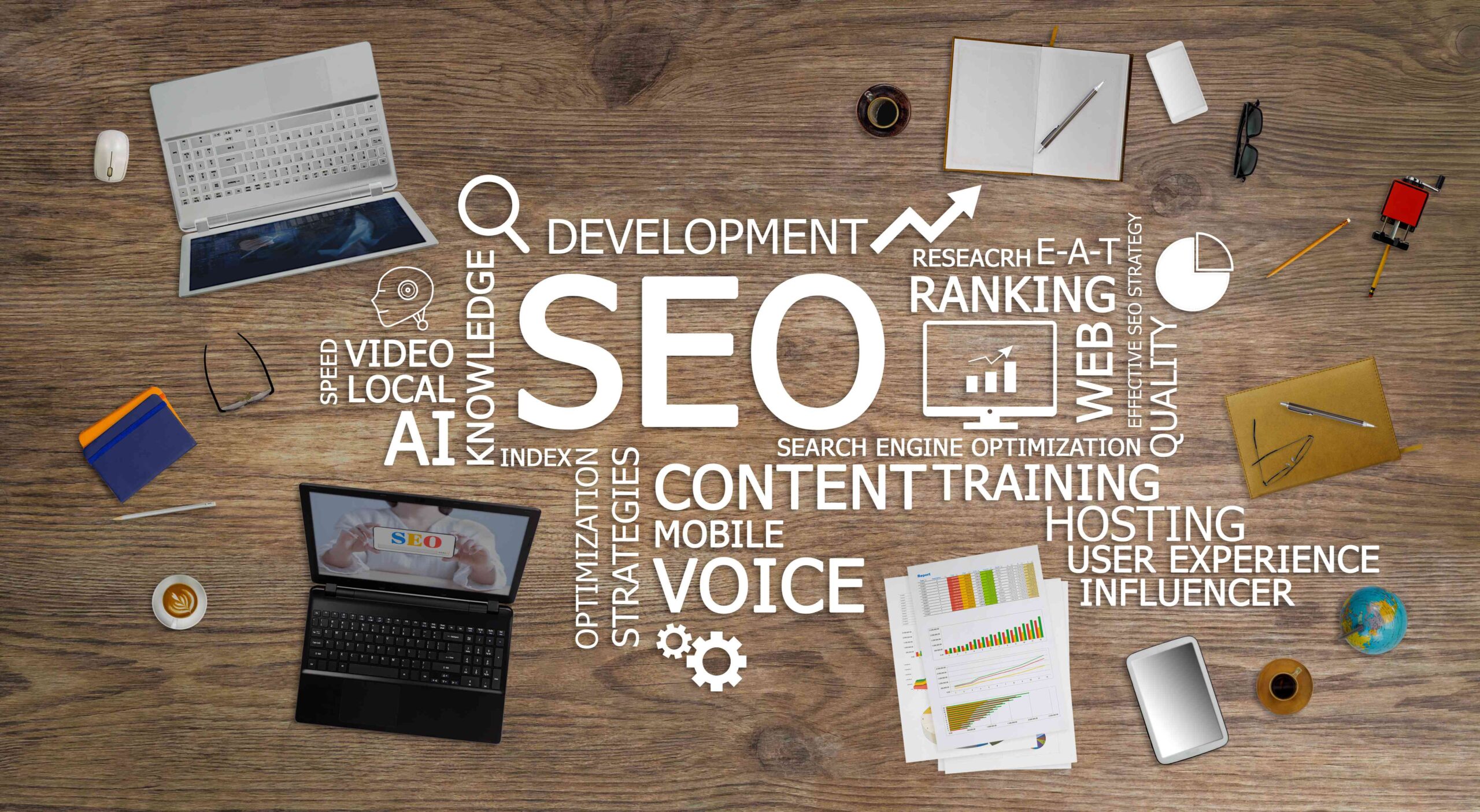The world of Search Engine Optimization (SEO) is perpetually evolving, presenting fresh challenges and opportunities for professionals in the field. As we navigate through 2023, the demand for skilled SEO experts continues to soar, driven by an increasingly digital marketplace. This article aims to guide aspiring SEO professionals on how to successfully land a job in this dynamic industry, drawing on insights from a real-life SEO job screening task. Whether you’re eyeing an entry-level position or aiming for a senior role, understanding the nuances of SEO in today’s landscape is key to your success.
Understanding SEO Roles:
SEO encompasses a range of specializations, each catering to different aspects of digital marketing. From Technical SEO Analysts, who focus on the technical aspects like site speed and crawlability, to Content SEO Specialists, who create and optimize content for search engines, the variety is vast. Other roles include Link Building Experts, who strategize to improve a site’s backlink profile, and SEO Managers, who oversee all SEO activities and align them with the company’s marketing goals. Each role demands a unique set of skills and understanding of the SEO ecosystem.
Job Requirements in the SEO Landscape:
Landing an SEO job in 2023 requires a blend of technical know-how, creativity, and analytical skills. Familiarity with SEO tools and platforms is fundamental, as is a deep understanding of search engine algorithms and updates. Prospective employers look for candidates who can demonstrate expertise in areas like keyword research, on-page and off-page optimization, and content strategy. Furthermore, the ability to analyze data and derive actionable insights is crucial. Soft skills such as adaptability, problem-solving, and effective communication are equally important in this fast-paced environment.
Applying SEO Knowledge in Real-World Scenarios:
An integral part of securing an SEO job involves showcasing your ability to apply theoretical knowledge in real-world scenarios. This requires not just familiarity with SEO principles but also an understanding of how they evolve with market trends and search engine updates. For instance, the ability to conduct keyword research without relying solely on tools, or developing strategies to adapt to Google’s core updates, can set you apart in the job market. This article will further explore these aspects, using responses from a job screening task as practical examples.
A Glimpse into SEO Screening: Understanding the Task Process
1)What are the most important SEO factors in 2023 (2-5)
- Quality Content: Consistently publishing engaging, informative, and well-written content that satisfies user intent is crucial. Content should be valuable, relevant to the target audience, and updated regularly for freshness. This factor is highlighted across all sources as the most critical aspect of SEO in 2023.
- Backlinks: Quality backlinks from reputable and relevant websites remain a key ranking factor. They act as endorsements for the credibility and authority of your website. While the importance of backlinks has slightly diminished in favor of other factors like content quality and user engagement, they still play a significant role in rankings.
- Mobile-Friendliness and User Experience: With the increasing use of mobile devices for internet access, having a mobile-friendly website that provides a good user experience is essential. This includes fast loading speeds, easy navigation, and a design that adapts well to different screen sizes.
- Technical SEO: This includes a range of factors like site speed, structured data (schema markup), SSL certification, and overall website health and security. Technical SEO ensures that a website is easily crawlable and indexable by search engines, alongside providing a good user experience.
- E-A-T (Expertise, Authoritativeness, Trustworthiness) and User Engagement: Google emphasizes the importance of content that demonstrates expertise, authoritativeness, and trustworthiness, especially for YMYL (Your Money Your Life) topics. User engagement metrics like click-through rates, time spent on page, and bounce rates are also crucial indicators of content quality and relevance.
These factors are interdependent and contribute to a holistic SEO strategy focused on providing value and relevance to users while adhering to technical best practices.
2) Without keyword tools generate a list of primary keywords and long tail keywords for the main keyword “online blackjack”. (no more than 10) Describe how you came to these keywords, highlighting which you would consider long tail keywords.
To generate a list of primary and long-tail keywords for “online blackjack,” I utilized Google’s Autocomplete, People Also Ask, and Related Searches features. Here’s a concise list of keywords based on these sources:
Primary Keywords:
- Online Blackjack
- Online Blackjack Canada
- Online Blackjack Ontario
- Online Blackjack Real Money
- Long-Tail Keywords:
- Online Blackjack with Friends
Long-Tail Keywords:
- Online Blackjack Rigged
- Online Blackjack Canada Reddit
- Online Blackjack Simulator
- Can I Play Blackjack Online for Real Money?
- What is the Best Site to Play Blackjack?
The primary keywords are broader and more general, capturing the essence of the topic. They are frequently used in searches and have a high search volume. Examples include “Online Blackjack” and “Online Blackjack Real Money.”
Long-tail keywords are more specific and usually longer phrases. They cater to a more targeted audience and can be less competitive. These include specific queries or reflect particular concerns of users, such as “Online Blackjack with Friends” and “Can I Play Blackjack Online for Real Money?”
This keyword list was derived by analyzing popular search queries and suggestions provided by Google, reflecting what users commonly search for in relation to online blackjack.
3. Describe your keyword research process in a few steps
In general, my personal strategy to find the best keywords to target is based on the method described above, combined with checking them through several platforms like Google Ads, Semrush, and Ahrefs, where I look for approximate organic traffic, the region of where the traffic is from (which country), and the level of competition.
4. Describe how you do your competitor analysis process in a few steps
My competitor analysis strategy involves carefully looking at the online market to figure out what makes content rank well in search engines. First, I find the right keywords (KWs) that suit my target audience and what I want to achieve. Next, I examine the top 5 Google search results for each keyword, making sure to focus on the right geographic area. This is important for knowing who my direct competitors are for these specific keywords.
In the next phase I conduct what I like to call- Quantitative Research
A detailed analysis of each competitor’s webpage that ranks for your chosen KWs.
- This involves examining several key elements:
- Keyword Usage: Determine how frequently the main KW appears in their content.
- URL Structure: Check if the KW is included in the competitor’s URL.
- Meta Description, Title, and Headers: Analyze if and how the KW is used in these crucial on-page SEO elements.
- Content Structure: Count the number of headers, internal links, and images used. Backlink Profile: Assess the number of referring domains to the page.
- Content Length: Gauge how long the content is to understand the depth and comprehensiveness.
- Domain Metrics: Look into domain-related metrics like Domain Authority (DA), Domain Rating (DR), and Ahrefs Score (AS).
- Additional Page Elements: Identify any other unique elements or features used by competitors, such as infographics, videos, or interactive content.
With this detailed data, I gain a comprehensive understanding of what it takes to effectively compete for the same KWs. This insight is instrumental in guiding my content creation and SEO strategy, enabling me to match or even surpass the quality and depth of the top-ranking pages.
My approach is grounded in deriving data-driven insights from top-ranking pages in search results, which informs me about the high-quality and relevant content favored by search engines.
By benchmarking against the best, I’m able to tailor my content more precisely to meet these high standards. Covering various SEO elements from keyword usage to backlinks, my method ensures a comprehensive strategy. This enables me to develop targeted content that not only aligns with SEO best practices but also significantly enhances my chances of achieving a higher ranking. Ultimately, this process equips me with the insights necessary to execute an effective SEO strategy, specifically tailored to the keywords and competitive landscape I aim to conquer.
5. How you dealing with Google Core Updates, are you right away try to change things in your website or you prefer to wait for the update to finish and then assess your recovery plan?
After a Google core update has fully rolled out, my approach is to observe and analyze the changes in search engine rankings, particularly focusing on which pages Google now prefers. This observation is a natural extension of my previous strategy of conducting thorough competitor research and keyword analysis.
By waiting for the update to complete, I get a clearer picture of the new SEO landscape. I closely monitor discussions within the SEO community and gather insights from platforms like Twitter and Facebook groups. These insights, combined with the direct observation of shifts in rankings and traffic, provide a rich source of information.
Once I’ve identified the pages that Google seems to favor post-update, I examine these pages in the context of my earlier competitor analysis. This involves looking at how these pages use keywords, their content structure, backlinks, and other SEO elements that have allowed them to succeed under the new algorithm conditions.
With this information, I then adapt and refine my website’s content and SEO strategy. This adaptation is not about copying what competitors are doing but rather understanding what Google is rewarding in this new update and then applying these learnings to improve my website’s performance. By combining insights from the update with my initial competitor and keyword research, I can make informed decisions that align with the latest SEO best practices, ensuring my website is well-positioned to thrive in the evolving search landscape.
To recover a page that lost its ranking due to the latest Google update, it’s essential to first review any official communications from Google regarding the update. Google often provides specific guidance or areas of focus, which are critical in formulating a recovery strategy. After gaining insights from these guidelines, I would proceed with the following steps:
- Analyze Top-Performing Competitors: Examine the pages that now rank higher for the same keywords. I would look at their content structure, keyword usage, backlinks, and user engagement metrics.
- Reevaluate On-Page SEO Elements: Check the affected page’s meta tags, headers, and keyword optimization to ensure alignment with current best practices.
- Content Quality and Relevance: Enhance the content to be more comprehensive and engaging, in tune with what the current algorithm might favor.
- Improve User Experience (UX): Ensure the page offers a positive user experience, including layout, mobile responsiveness, loading speed, and navigability.
- Backlink Profile Review: Assess the page’s backlinks for quality and relevance, adjusting as needed to meet the new algorithm’s requirements.
- Monitor Keyword Performance: Reassess the keywords for shifts in relevance or competitiveness, considering the targeting of different or more specific long-tail keywords.
- Continuous Monitoring and Adjustment: After implementing changes, closely monitor the page’s performance, making ongoing adjustments as needed for continuous improvement.
By methodically applying these steps and adapting the page to align with the updated search landscape, I aim to recover and improve its ranking post-update.
As I wrote the answer, I got this infographic in one of the FaceBook groups I am a member of:
7. Choose one of the pages below and suggest anything you think would improve the page in terms of on-page SEO (Structure, better title, H1/2/3, additional content etc..)
I’ll focus on this page- https://www.ABCDEF/best-payout/ (not the original page)
To further refine our SEO strategy for Casinocanuck.ca’s “highest payout casino” page:
- Content Volume and Enhancement: The current content is significantly shorter than competitors like Gambling.com. We should augment our content to match or exceed their length, incorporating comprehensive answers from Google’s ‘People Also Ask’ section.
- Title and Meta Description Optimization: The main keywords are missing from the meta description. We should revise the title and meta description to include our primary keywords, ensuring they’re as close to the start as possible for greater impact.
- Regular Content Updates: The page lacks regular updates. Monthly refreshing of the H1 tag and content will signal ongoing relevance to Google.
- Affiliate-Focused Content and Headers: Our headers and content don’t fully reflect our affiliate review site status. We should use headers like “Our Highest Payout Online Casinos Ranked” and align our content with this perspective.
- Indexing and URL Optimization: Currently, the page is not indexed on Google, and our target keywords are absent from the URL. We need to check our sitemap.xml, resubmit to Google Search Console for indexing, and revise the URL to include the full target phrase.
- Author Credibility and Transparency: The current author bio seems inauthentic. We should use real, identifiable authors with professional profiles linked to platforms like LinkedIn.
- Keyword Distribution: There’s a lack of strategic keyword placement. The main keyword should be prominently featured in the title, H1, and naturally distributed throughout the content in various forms.
By implementing these strategies, we can improve our SEO, making our page more visible in search results. This is a solid start, but there are more steps we can take for further optimization.
8. (without using an SEO tool) We have the opportunity to buy a link from https://www.pagat.com/ Should we buy a link from this site? Where would you place the link and what would be the anchor text? Are there any other considerations? Explain your reasoning.
Considering the relevance of Pagat.com, a site dedicated to card games, it’s a suitable candidate for a link placement given its thematic connection with casinos. Many other websites also appear to be leveraging this site for link building, suggesting its potential value.
When determining the optimal placement for the link, we should aim for a high-visibility area on the page to increase the likelihood of clicks. The link should be contextually valuable, enhancing the reader’s experience. In this case, placing the link in the “Contributions and Feedback” section, preferably within the opening paragraph, would be strategic. The anchor text should be natural and engaging, possibly indicating our support or sponsorship of the site.
Regarding link attributes like no-follow or sponsored tags, it’s crucial to match the existing link profile on Pagat.com to avoid standing out as an obvious link-building effort. Aligning with the current practices on the site would ensure a more seamless integration of our link and reduce the risk of it being flagged by search engines.
9. (You may use an SEO tool) We have the option of buying an article on www.archyde.com or a text link in an existing article. Should we buy a link from this site? In an existing article or a new one? If so, which article or what would be the title of the article you would write and what anchor text would you expect to use. Explain your reasoning.
The decision to acquire a link from Archyde.com should be a firm no. Here’s why:
- Traffic Decline: Since April 2021, the site has experienced a downward trend in traffic, indicating declining relevance and reach.
- Irrelevant Traffic Source: The majority of the site’s traffic doesn’t originate from Canada, which is our target audience.
- Poor Backlink Profile: A review of the site’s backlinks reveals a plethora of links from spammy sources, suggesting a low-quality site profile.
- Lack of Niche Focus: Archyde.com lacks a specific niche or area of expertise, making it an unsuitable and potentially harmful choice for link building in our context.
10. (You may use an SEO tool) We have the opportunity to buy a backlink on https://www.goal.com/en Should we buy a link from this site? If the answer is yes, would you rather publish your own article with a link inside, or insert a text link to an existing article at their website? Explain your reasoning.
Securing a backlink from Goal.com may be beneficial, provided certain criteria are met:
- Relevance: Goal.com is a high-traffic site, known worldwide, especially for sports betting.
- Traffic Considerations: Most of its traffic isn’t from Canada, only 0.1%.
- The primary objective of acquiring a backlink from Goal.com isn’t for SEO, but rather to tap into their substantial direct traffic.
Even though Goal.com’s Canadian traffic is minimal, the sheer volume of their global audience means that even a tiny fraction of click-throughs to our site can be substantial.
This approach is more about leveraging their traffic for direct visitor engagement, rather than relying on traditional SEO benefits. The idea is that even if only a small percentage of Goal.com’s visitors click on our link, it could still translate into a significant number of new visitors and potential conversions for us. - Investment Justification: When considering the purchase of a link from Goal.com, it’s important to focus on the Canadian traffic segment, as visitors from other regions are not our target audience.
Although Canadian traffic(261.5K) constitutes only a small percentage of Goal.com’s overall traffic, even this small segment can be significant. For instance, if 0.1% of Goal.com’s Canadian visitors click our link and assuming 20% of these clicks convert into active users, the direct traffic could still translate into considerable gains. This calculation justifies the potential $3000 investment for a well-placed link, focusing on direct traffic benefits rather than SEO. - Link Placement: It’s important the link is easily noticeable and encourages clicks, regardless of SEO attributes like no-follow or do-follow.
Conclusion:
Embarking on a career in SEO in 2023 is a journey of continuous learning and adaptation. It’s not just about mastering the technical aspects but also about understanding the ever-changing landscape of digital marketing. Whether you are starting fresh or looking to advance your career, staying updated with the latest trends, sharpening your analytical skills, and being creative in your approach are the keys to success. By aligning your skills with the industry’s evolving needs and demonstrating your ability to tackle real-world challenges, you can carve out a successful career in SEO.






